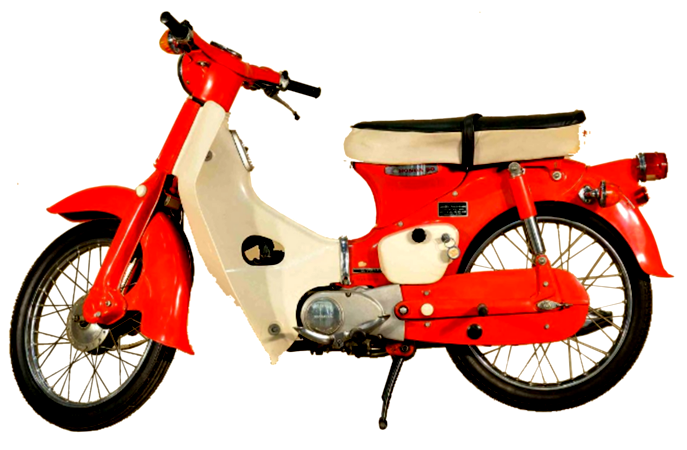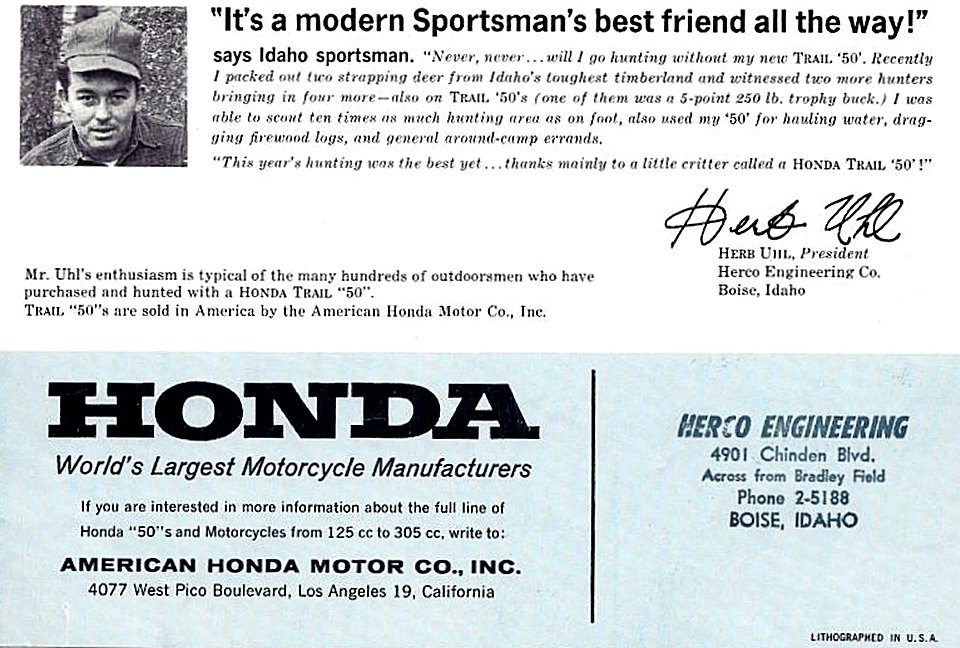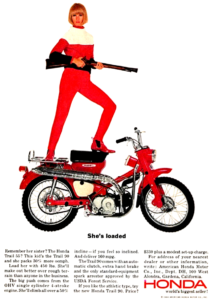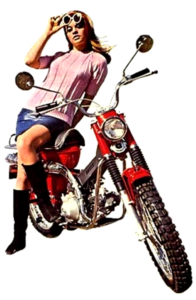In the annals of motorcycle history, few stories are as compelling as that of Herb Uhl, a visionary innovator from Boise, Idaho. Uhl’s story is a testament to the power of seeing potential innovation in an existing design and the transformative effects such vision can have on an industry1.
The Beginning
Herb Uhl was the first importer of a Honda motorcycle of any kind into the United States1. The Super Cub, known then as the C100 or CA100, was a scooter-like Honda with a pressed-steel frame powered by a 50-cc engine with a three-speed transmission and automatic clutch1. Despite its innovative design, Uhl struggled to sell the Super Cub in Boise1, Idaho because motorcycles were primarily used in the local mountains on the hundreds of trails and old mining roads in the area and seldom for city transportation because in 1960, Boise was still a small town.
The Vision
Rather than seeing the Super Cub as only a great little city transportation bike with little sales potential for locals, Uhl saw potential. He envisioned transforming the Super Cub into an all-terrain vehicle that could be used for hunting, trail riding, on the ranch, and on the open road1. This would have huge potential for the local market served by Herb Uhl’s Herco Engineering Co. dealership.
In his custom motorcycle shop, Uhl began modifying the bikes to his trail and ranch specifications1.
The Success
Uhl’s modifications were a hit. His sales escalated rapidly, culminating in a volume of Honda Cubs sold by Uhl that surpassed the combined sales of all dealers in the Los Angeles region. His success caught the attention of Honda, who visited Uhl to see what all the commotion was about1. Herb introduced them to his trail bike based on Honda’s Super Cub1. Impressed, Honda asked him for the specs and even took one of his bikes home to reverse engineer it1.
The Legacy
In no time, Honda had production models of the first motorcycle-derived ATV, and it was for sale in all Honda dealerships. The successive Trail 90 became the biggest-selling adventure bike in the world3. Despite his significant contribution, Uhl never saw a penny from his innovation1. But for Uhl, it wasn’t about the money. It was about making a contribution and making motorcycles better for the riders1. Plus, he could sell more bikes with less effort because Honda was building his design, which needed no additional modification to serve his clientele1.
According to Herb Uhl
One of my strengths is my ability to understand what the public wants in a specific product line. For instance, when I was a motorcycle dealer, I understood the customers wanted a trail bike and nothing good was available, so I made one by modifying an existing little city transportation bike, Honda’s Super Cub, transforming it into the first motorcycle-derived ATV, and that has led to a multimillion-dollar windfall for the major motorcycle manufacturers which has led to the four wheelers and side-by-sides of today.
I’m sure you remember that the Jeep was the first automotive-derived ATV and look how that has led to today’s super trucks.
Conclusion
Herb Uhl’s story10 is a powerful example of the impact a visionary can have on the world. His ability to see potential innovation in an existing design led to the creation of the Honda Trail 90, and the many ATV trail bikes, four-wheelers, side-by-sides, and adventure bikes that have followed. Uhl’s modifications transformed the motorcycle industry, and his improvements continue to be celebrated in the success of Honda’s new model trail bikes today4, 2. Visionaries like Uhl should indeed be honored for their contributions to the world1.
Note: During Uhl’s time in the motorcycle industry, his store was associated with 30 different motorcycle brands from 9 different countries in order to satisfy his customers’ desires.
Resources:



